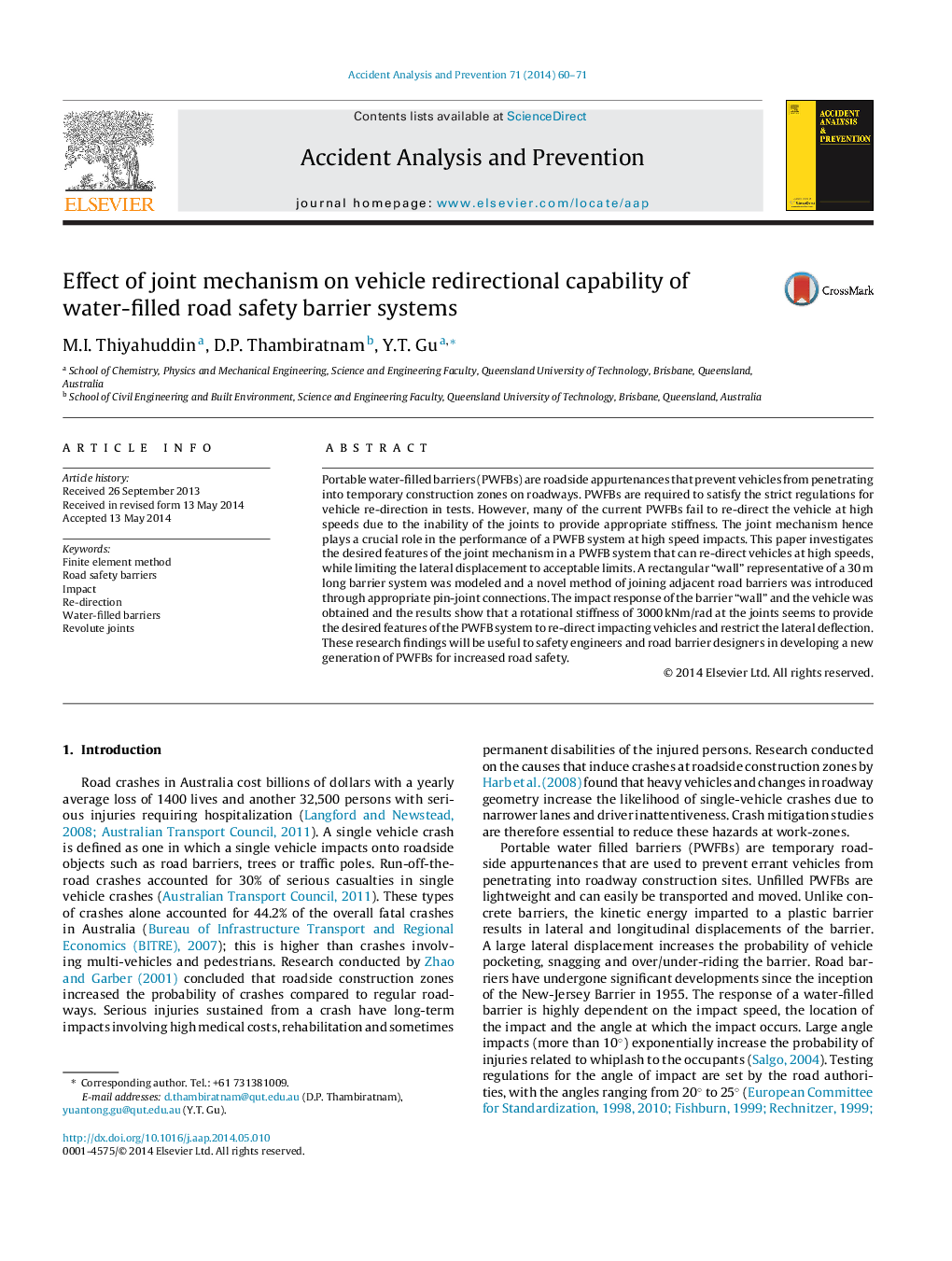| Article ID | Journal | Published Year | Pages | File Type |
|---|---|---|---|---|
| 6965897 | Accident Analysis & Prevention | 2014 | 12 Pages |
Abstract
Portable water-filled barriers (PWFBs) are roadside appurtenances that prevent vehicles from penetrating into temporary construction zones on roadways. PWFBs are required to satisfy the strict regulations for vehicle re-direction in tests. However, many of the current PWFBs fail to re-direct the vehicle at high speeds due to the inability of the joints to provide appropriate stiffness. The joint mechanism hence plays a crucial role in the performance of a PWFB system at high speed impacts. This paper investigates the desired features of the joint mechanism in a PWFB system that can re-direct vehicles at high speeds, while limiting the lateral displacement to acceptable limits. A rectangular “wall” representative of a 30Â m long barrier system was modeled and a novel method of joining adjacent road barriers was introduced through appropriate pin-joint connections. The impact response of the barrier “wall” and the vehicle was obtained and the results show that a rotational stiffness of 3000Â kNm/rad at the joints seems to provide the desired features of the PWFB system to re-direct impacting vehicles and restrict the lateral deflection. These research findings will be useful to safety engineers and road barrier designers in developing a new generation of PWFBs for increased road safety.
Keywords
Related Topics
Physical Sciences and Engineering
Chemical Engineering
Chemical Health and Safety
Authors
M.I. Thiyahuddin, D.P. Thambiratnam, Y.T. Gu,
